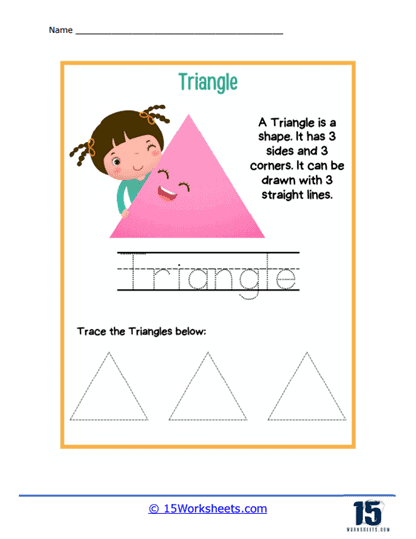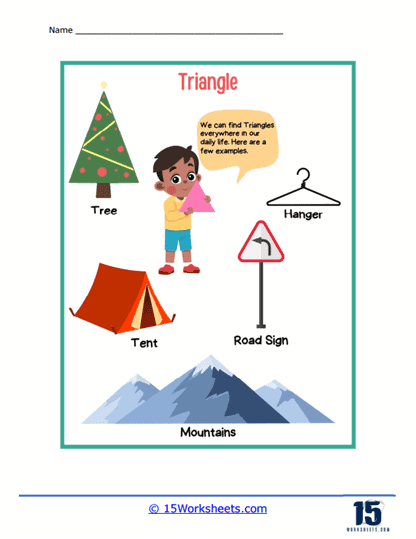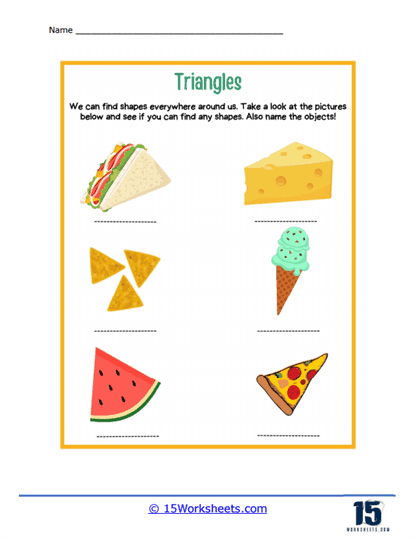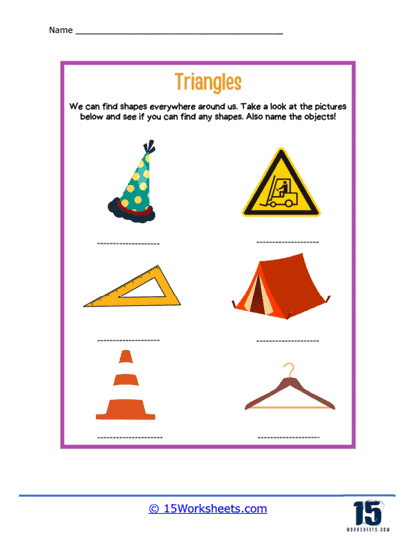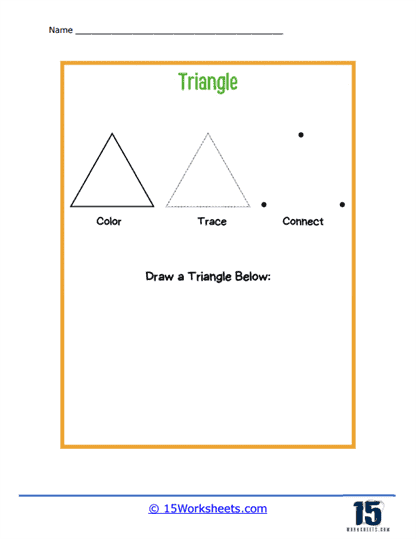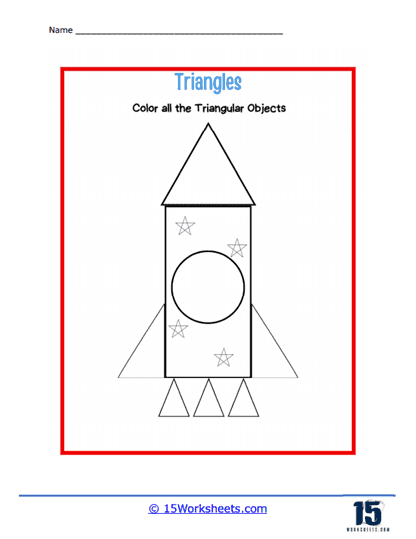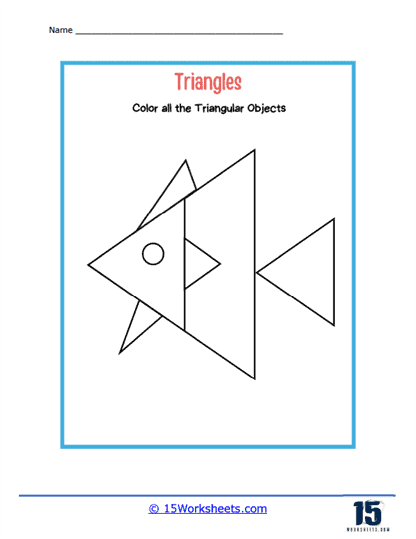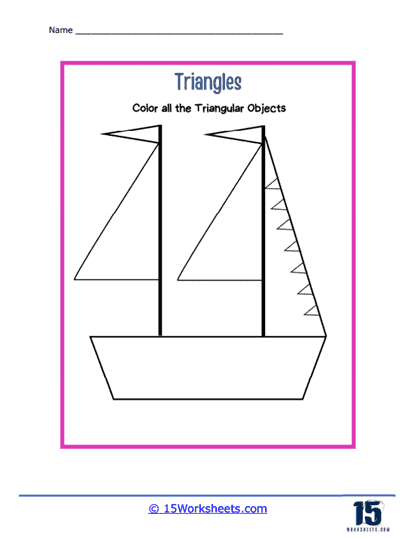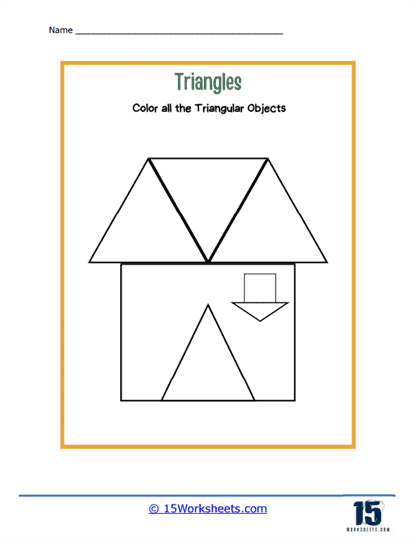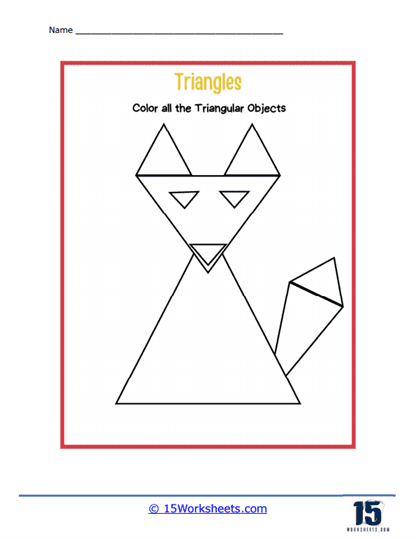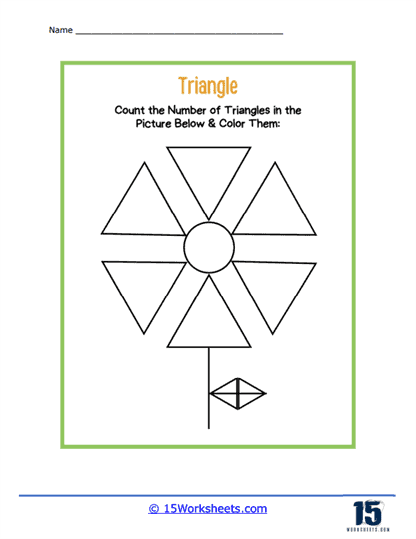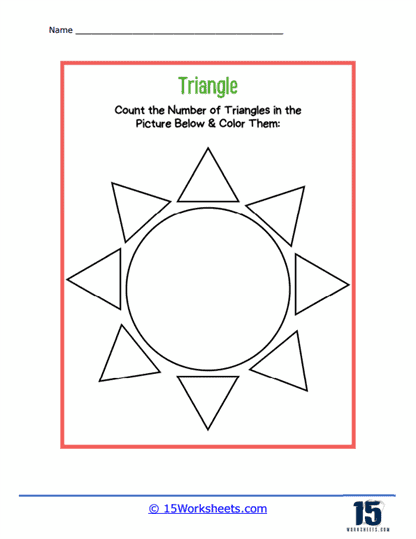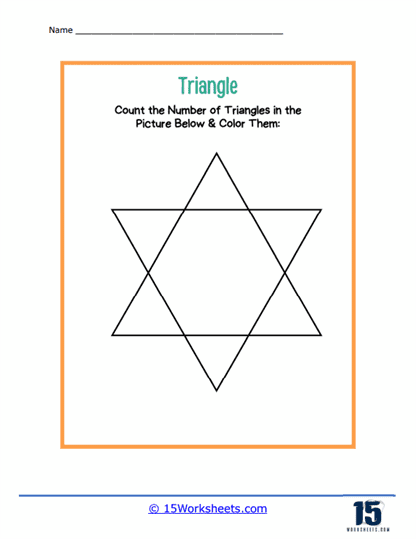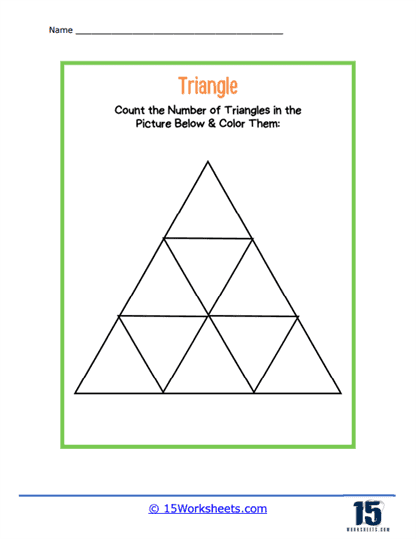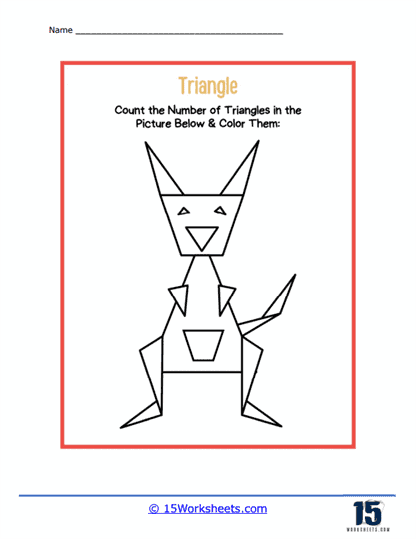Triangles Worksheets
About These 15 Worksheets
Triangles worksheets were developed to help students learn about and practice working with the triangle shape. These worksheets can be used in the classroom or at home to reinforce understanding of the triangle shape, its properties, and its appearance in various contexts. Our triangle worksheets include a variety of activities, such as:
Tracing and Drawing – These exercises help students develop fine motor skills and become familiar with the shape of a triangle. They might be asked to trace over dotted triangles or to draw triangles of different sizes and types.
Identification – Students might be given a sheet with various shapes and asked to circle or color in the triangles. This helps them practice recognizing triangles among other shapes.
Coloring and Decorating – Younger students might be given a sheet with several triangles to color or decorate, encouraging creativity while reinforcing the shape.
Counting – Worksheets might include pictures with multiple triangles and ask students to count the total number of triangles in the image.
Matching Likes – Students may be asked to match triangles based on size, orientation, or other properties, such as side length or angle measures, helping them understand similarities and differences among triangles.
Classification – Worksheets might include exercises for students to classify triangles based on their side lengths (equilateral, isosceles, or scalene) or angle measures (acute, right, or obtuse).
Geometry and Measurement – For older students, worksheets could involve calculating the area, perimeter, or angle measures of triangles, understanding the relationships between side lengths and angles, or exploring properties of special triangles, such as right triangles, isosceles triangles, or equilateral triangles.
These are just a few examples of the types of activities that might be included in triangles worksheets. Teachers and parents can create their own worksheets or find pre-made ones online to suit their students’ needs and learning levels.

